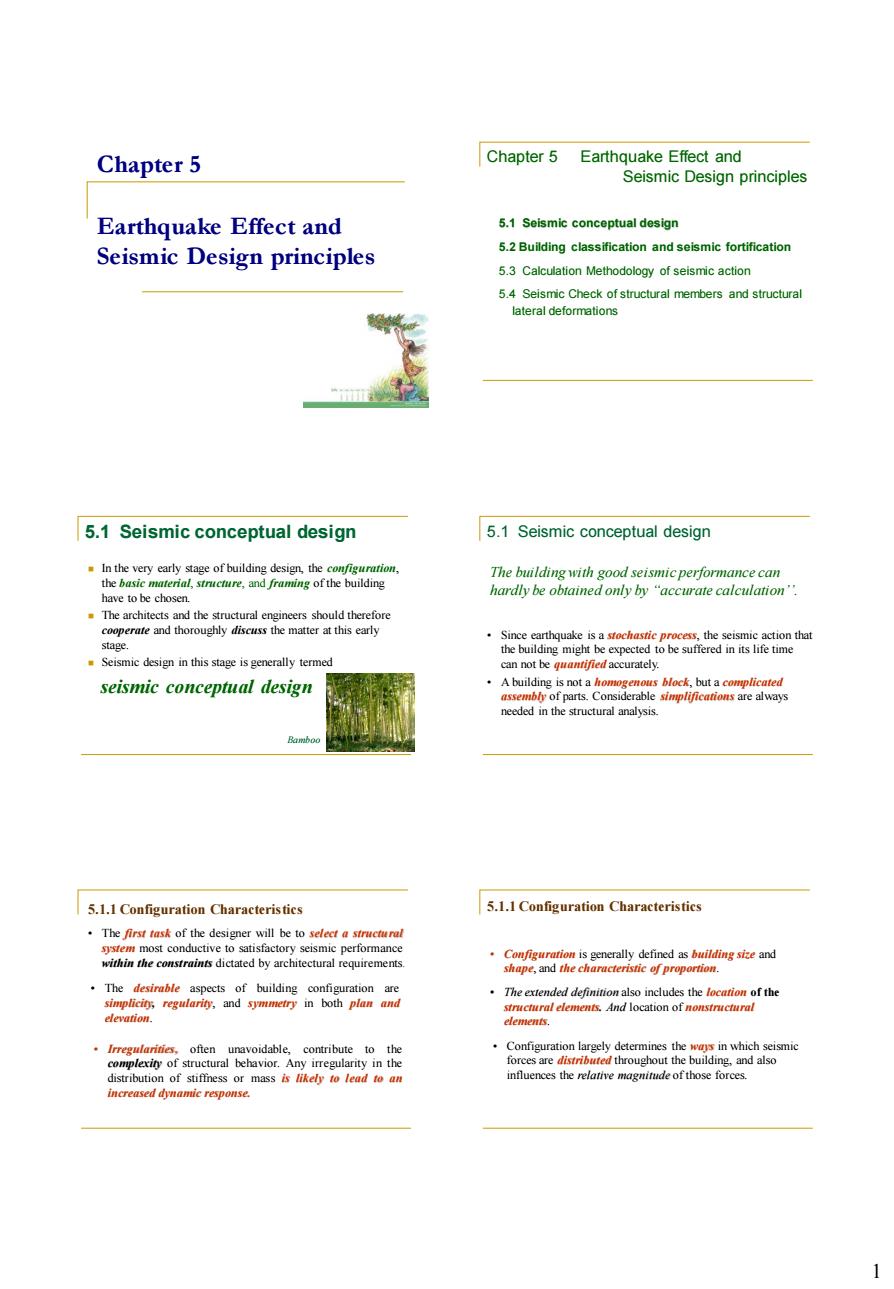正在加载图片...

Chapter 5 Chapter 5 Earthquake Effect and Seismic Design principles Earthquake Effect and 5.1 Seismic conceptual design Seismic Design principles 6 aionhethoedologyofselsmcacion 5emeCcnranmentesandsneal 5.1 Seismic conceptual design 5.1 Seismic conceptual design The building with good seismic performance can hardly be obtained only by "accurate calculation seismic conceptual design ndnhtrayis 5.1.1 Confieuration Characteristics 5.1.I Configuration Characteristics .of the designer will be tos 1 Chapter 5 Earthquake Effect and Seismic Design principles Chapter 5 Earthquake Effect and Seismic Design principles 5.1 Seismic conceptual design 5.2 Building classification and seismic fortification 5.3 Calculation Methodology of seismic action 5.4 Seismic Check of structural members and structural lateral deformations In the very early stage of building design, the configuration, the basic material, structure, and framing of the building have to be chosen. The architects and the structural engineers should therefore cooperate and thoroughly discuss the matter at this early stage. Seismic design in this stage is generally termed seismic conceptual design 5.1 Seismic conceptual design Bamboo • Since earthquake is a stochastic process, the seismic action that the building might be expected to be suffered in its life time can not be quantified accurately. • A building is not a homogenous block, but a complicated assembly of parts. Considerable simplifications are always needed in the structural analysis. The building with good seismic performance can hardly be obtained only by “accurate calculation’’. 5.1 Seismic conceptual design • The desirable aspects of building configuration are simplicity, regularity, and symmetry in both plan and elevation. • Irregularities, often unavoidable, contribute to the complexity of structural behavior. Any irregularity in the distribution of stiffness or mass is likely to lead to an increased dynamic response. 5.1.1 Configuration Characteristics • The first task of the designer will be to select a structural system most conductive to satisfactory seismic performance within the constraints dictated by architectural requirements. • Configuration is generally defined as building size and shape, and the characteristic of proportion. • The extended definition also includes the location of the structural elements. And location of nonstructural elements. 5.1.1 Configuration Characteristics • Configuration largely determines the ways in which seismic forces are distributed throughout the building, and also influences the relative magnitude of those forces